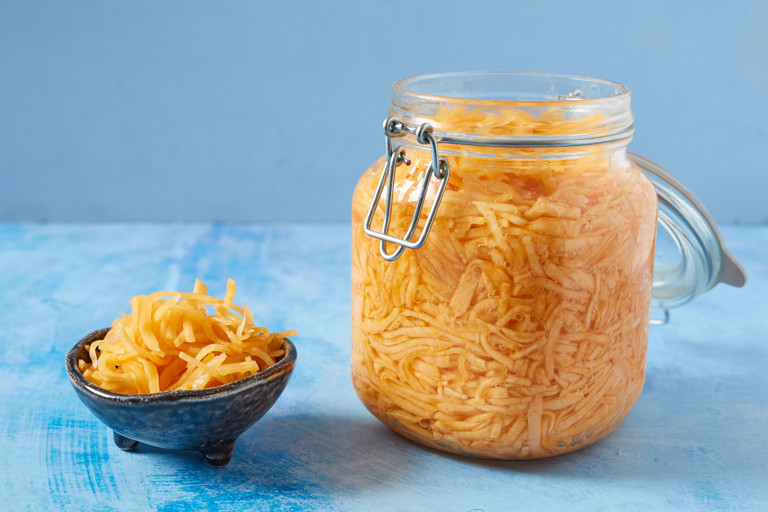Swede sauerkraut
- Side
- 20
- 1 hour 30 minutes
Sauerkraut is traditionally made with cabbage, but this swede sauerkraut recipe sees the under-appreciated root vegetable get the fermentation treatment instead. The result is a crunchier, sweeter preserve that works well with cold cuts. Take a look at Anna's other swede recipes here.
This may sound like a peculiar alternative to traditional cabbage sauerkraut, but swede is actually part of the kohlrabi family, so can be used in a similar fashion. This kraut can be eaten both raw and cooked and is a good accompaniment to ham or boiled meats. I found this recipe in Jeremy Fox’s book On Vegetables and I am giving you his exact instructions.
Caraway seeds in sauerkrauts are a welcome addition, giving a perfumed and distinctly eastern European flavour. Be cautious with the quantity, though, as it can be overpowering. For the amount in this recipe, add 1 teaspoon of seeds.
The recipe makes 1 litre of swede kraut.
Method
Get in touch
Please sign in or register to send a comment to Great British Chefs.



